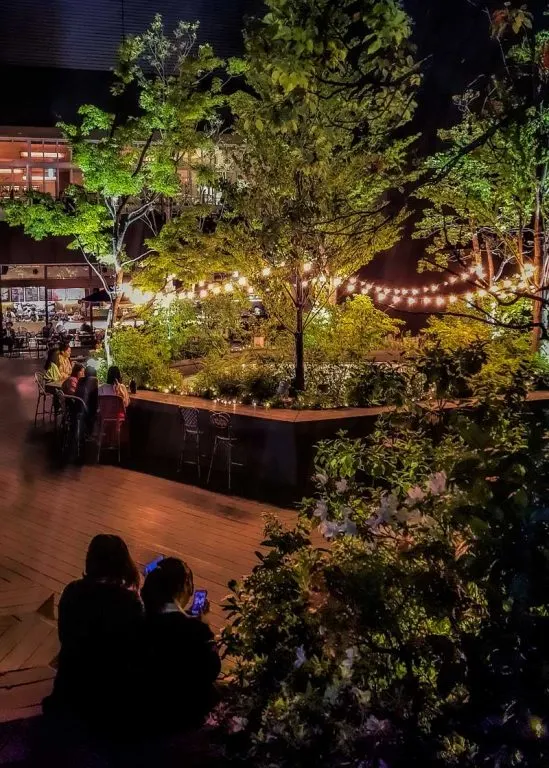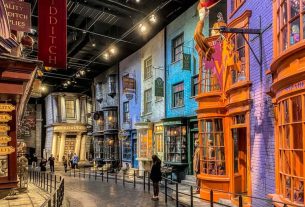Shibuya is a fun and diverse area of Tokyo. It’s centrally located, a great base for your travels and an essential part of the city to spend some time in. We highlight the best things to do in Shibuya and our top picks on where to eat, play and stay.

Shibuya is one of the 23 special wards that make up Tokyo city. It’s around 15 square kilometres in size and one of the most popular places for locals to spend their spare time and for tourists to visit. It includes some fun and fabulous destinations, including Harajuku, Omotesando, Aoyama and the immediate area around Shibuya station, often referred to as Shibuya, just to make things slightly more confusing.
We are often asked where to stay in Tokyo, and this series of articles is intended to help you make the best choice for your personal preferences and requirements. We look at the attractions, foodie highlights and advantages of each to help you make the most of your time in the area and decide whether to base yourself here or include it as a stop in your Tokyo itinerary.
Read More: Tokyo district guides for Asakusa and Odaiba.
Just exploring the highlights would take many days, possibly months, but we’ve created a list of some of the best things to do in Shibuya; these will help you organise your own itinerary for the area, focusing on what interests you most. To help you use it in creating your own cohesive and efficient plan to see as much as possible in the available time, I’ve grouped the suggestions broadly by area, including Shinjuku, Omotesando, Aoyama and Shibuya Station.
Table of Contents
The best things to do in Shibuya
Shibuya Crossing
While Shibuya station isn’t Tokyo’s busiest railway station, this multidirectional crossing right outside it is so intensely busy that it’s become an experience you must have when visiting the city. For someone like me who isn’t a big city person, it really is quite crazy. Still, I have to admit I enjoyed watching it swarm more from an upstairs window seat at Starbucks in Tsutaya or Hoshino Coffee in Shibuya 109 than being in the heart of it.

There are various lookout points in the surrounding shopping centres, and the new Shibuya Sky outdoor viewing deck that opened in late 2019 is now possibly the best view at 229 metres above the street. Although you have to buy an entry ticket for this one, some of the other options are free, or the price of a coffee in the case of Starbucks.
Yoyogi park
It all happens in Yoyogi Park, from Elvis-impersonating rock and roll dancers to rabbits out walking on leads in their Sunday best, skateboarding dogs, live music, and massive Hanami parties in cherry blossom season.

It is one of Tokyo’s biggest parks, with expansive lawn areas, huge old shade trees, ponds, and forested areas. Although it doesn’t have massive plantings of cherry trees or autumn colour, it does have a dramatic display of both in the right season and is a popular place to visit.
A visit to Harajuku isn’t complete without a stroll through the park’s many walking paths, enjoying the people-watching or relaxing for a while under the trees.
Meiji Shrine
Meiji Shrine is a massive shrine here in central Tokyo. It is named for and honours Emperor Meiji who unified Japan, ended the period of feudal rule and brought Japan into the modern world.

Its scale and beauty reflect how the Japanese feel about the Emperor and his consort, Empress Shoken. If you only visit one shrine in Tokyo, this is a great choice. It’s a haven amid a chaotic city, a forest of 70 hectares planted from scratch by 110,000 volunteers and including over 200 species of trees donated from across Japan.
Read More: We explain some of the customs and etiquette for visiting a shrine, and we take a look at Meiji Shrine in more detail.
Harajuku
If you associate kawaii (cute) culture with Japan, you will find its home and many of its followers in Harajuku. Although it is strongly associated with Japan internationally, you really only see cosplay to any degree in a small section of Tokyo, most notably here in Shibuya.

It was where we went on our very first day in Tokyo, almost 10 years ago. Back then, cuteness (kawaii), Decora, and Lolita culture were even more prevalent, but there is still plenty of colour, unique fashion, and arty, colourful food.
The overpass heading towards Meiji Shrine and the station is a popular gathering point if you need to meet anyone, but it is also a top spot for Lolita and Goth fashion, as is Yoyogi Park a little further on.
Nezu museum
For a complete change of pace, head out to the Nezu Museum. It’s one of our favourite places in Tokyo and one I could return to over and over again. There are three attractions to visit here, and it’s hard to pick which I enjoy most.
The curation of the art gallery is next level, it’s absolutely amazing and the exhibitions change regularly. When we were there, the special exhibition rooms had Japanese screens painted in intricate detail from the book The Tale of Genji, the world’s oldest novel. it was particularly timely as we headed to Uji in Kyoto later in that trip, a destination with strong ties to the book.
The second part is the garden. The lush urban garden is created on land purchased by Nezu Kaichirō in 1906, he loved its undulating contours and saw the potential for creating the many natural scenes that exist in it today and unfold with the seasons. Scattered through the garden are some impressive art pieces. Many are Buddhist art from across Asia dating back through the centuries. We visited in May when the blue irises were in flower around the ponds, which is stunning, but this garden has something for every season.

The third highlight is the teahouse. Nezu Cafe stands above the garden with glass on three sides, allowing great garden views. Their own brand of organic coffee is very popular, but I love their tea. There is also a selection of light meals, cakes, and desserts on the menu. It gets especially busy at lunchtime, and we had to queue for about 20 minutes for a table, but the outlook and service are hard to beat.
Make sure to check the calendar on the official Nezu Museum site when planning, as they have irregular days when they don’t open, and they close for a week about once a month to switch out major exhibitions.
You’ll find Nezu Museum at 6 Chome-5-1 Minamiaoyama, Minato City, Tokyo
Takeshita Street
This popular shopping street in Harajuku tends to be crazy busy at any time of day now but it is one of those experiences in Tokyo that most people will want to include. You can get an idea of an average crowd in the photo below, this wasn’t a holiday or anything special.

You might feel that this is a crowd that you’ll only tackle once so you’ve had the experience. I do say ‘never again’ after each visit when we’ve been washed along on the wave of shoppers but I invariably return the next time I’m in Harajuku.
The shopping street is best known for pretty colourful food like the giant rainbow candyfloss, sweet fully loaded waffles and crepes, the Totti candy factory and unicorn gelato.
Not as worthy of the gram but a personal favourite is Zaku Zaku with their elongated choux pastry, it has a crispy texture which is itself unusual but they attribute their difference to the smooth as silk custard filling made of milk from free-range Hokkaido cattle.
A fabulous little sushi bar
Not far from Harajuku station is one of my favourite little modern sushi bars. Gonpachi Nori Temaki. It’s all clean lines, wood and moody lighting. The ingredients are of excellent quality, with deliciously balanced flavour combinations. It’s particularly hard to make your choice, but it’s equally difficult to make a bad one.
As the name implies, they specialise in hand-rolled (temaki) sushi. The counter seating faces towards the chefs in the centre, who compile and present your order piece by piece.
The nori (seaweed sheet) is an excellent quality from Maruyama and toasted extra crispy. I love sushi but was surprised at how much of a difference you can taste. Ingredients are then strategically placed on top to prevent seaweed softening, for visual impact and flavour balance.
This is the only sushi bar I have seen that offers options in the rice used, including cauliflower ‘rice’. The ingredients of each are fully detailed on the menu, making it ideal for anyone with dietary limitations.
The menu features traditional flavours, modern adaptations, and more Western styles, but it has been levelled up. For example, the salmon and avocado, something you’ll rarely see in a sushi bar in Japan, was an immaculately cut rectangle of fatty salmon that melted in the mouth paired with creamy, smooth avocado.
Read customer reviews of Gonpachi Shibuya on Trip Advisor
Hachiko statue
“I’ll meet you by Hachiko” is a common phrase heard by people heading out in the Shibuya area. They refer to a small statue outside exit 8 from Shibuya subway station near Shibuya 109. The statue has been around for a long time but is joined by a Hachiko wall, which is also pretty cute and a popular selfie spot.

The story of Hachiko is one of loyalty and love. He was an Akita dog and almost 100 years ago now, back when Shibuya was more a small town than a city, he would walk to the station each day with his owner, a professor, and would be waiting outside when he returned in the afternoon.
In 1925, the professor died while at work and didn’t return to collect Hachiko. Each day, Hachiko returned to the station exit to see if his owner was there, and he continued to do this for almost 10 years until his own death.
Get up above the city
The newest observation deck in the city is Shibuya Sky, which opened in November 2019. The skyscraper has an open-air observation deck at the top, which offers a fabulous perspective on the famous crossing below.
From the top, you’ll also spot landmarks such as Tokyo Tower, the SkyTree, and, if you are really lucky, Mt Fuji if you have a clear day.
It’s open from 9 am until 11 pm on the 46th floor of the Shibuya Sky Building. Entry is via level 14 and tickets cost Y2000 when purchased at the venue or they can be purchased slightly cheaper online.
The happy pancake
Pancakes became popular in Tokyo a few years ago, and Japan has created a unique twist on them with the jiggly pancake. These fluffy souffle-like versions are light and airy. They are usually sweet and served with fruit, chocolate sauce, and cream, but savoury options are also available.

The best ones we found are at a restaurant called The Happy Pancake in Omotesando. Watch out for the sign as it’s located downstairs below street level, which makes it a bit more difficult to spot. We choose to arrive at opening time to fuel us for a day of exploring in Shibuya and they have a sign-up sheet on a stand to write your name. When they open they call people in order down the narrow stairs and to their seats, there is no waiting space inside and it’s very popular so they have a ‘one table out – one table in’ policy from there.
We had a nice table by the window looking out on the greenery, which was not what we had expected as we headed down below street level. It’s light and bright inside, very comfortable, and has nice-sized tables so you don’t feel cramped. As you are shown to your table, you can see the thick jiggly pancakes cooking on the grill behind the glass window.
Winter illuminations
During winter, particularly around the Christmas and New Year holidays, Tokyo has many illumination events that make exploring the city streets in the evening even more fun.
In Shibuya, the light-ups focus on the Zelkova trees that line the city streets. Near the NHK Headquarters (Japan Broadcasting) adjacent to Yoyogi Park is known as Shibuya Ao no Dokutsu or ‘the blue cave’ where the 250-metre long pedestrian street is lit by so many blue LED lights above a reflective path, and it gives the impression of being immersed in the lights.
Along the Omotesando shopping street between Omotesando station and Harajuku, there are more Zelkova trees and (literally) a million more blue LED lights. This is where many prestige-branded shops are located, and the lights beautifully set off the impeccably curated shop windows.
Food tour
We love foodie tours in Tokyo, especially those run by Arigato Japan. We had so much fun with the ones we did in Asakusa and Ginza recently, but I have a very special Shibuya one next on my wish list.
The Arigato Japan Kawaii Food Tour is an immersion into the back streets of Omotesando and Harajuku with someone who knows every detail about them and their cute culinary treats. The tour includes plenty of cultural highlights, great information, tastings of the cutest sweet treats, and lunch at a very special okonomiyaki restaurant.
Another great option that we joined on our latest stay was the evening Shibuya Foodie Tour. There is a full tour overview and review on the site, but there is so much food on this one and a good orientation of the station area and the classic izakaya-style food that is enjoyed on a typical night out with a few drinks.
Indulge in a cup of latte art at Reissue
Watch for the small doorway and head up the stairs to the cafe. The relaxed, mismatched fit-out is a great spot to chill for a while. The coffee is great, but it’s their cute latte art that they are known for.
You choose your coffee and then your art design from their books of 2-dimensional and 3-dimensional designs. If you have a particular favourite, whether that’s Pikachu or Betty Boop, they can do it. In fact, if you have a photo of your favourite pet, they’ll even recreate that on your drink.

The address is below, but look for a small doorway, and you go up the stairs to the cafe. Reviews say the coffee is good, and we’d have to agree, as long as you like milk in your coffee or order the hot chocolate. It’s a bit more expensive than some, as you are paying for the art and experience along with your office and, of course, a bit of a wait for your order when they are busy. It is open from 10 a.m. until 6 p.m.
3 Chome-25-7 Jingumae, Shibuya, Tokyo 150-0001
Explore cat street
Okay, this is a bit of a spoiler: there were no cats. Well, there was one adorable and slightly pampered one in a quilted silver-grey purpose-designed backpack pod with a window, but no wanderers, as you might be expecting from the name.
It’s a pedestrian street that runs from Harajuku to Shibuya. It’s less busy and intense than the more familiar Takeshita Street but we like it a lot. Trendy, often expensive boutique stores and some international name brands line the street. You’ll also find plenty of interesting bars, cafes and food stalls along the way.
The shoppers in the family might spend the day here, for others it’s a good alternative walking route from Harajuku through to the Shibuya station area without walking along the main roads.
If you’re trying to find it on the map, try “Kyu-Shibuya-gawa Yuhodoro”. It translates to something like ‘the old Shibuya River Pedestrian lane’ as it was created before the 1964 Olympics when the creek was diverted below ground. If you watch out for the Ralph Lauren flagship store on the Omotesando, it starts virtually opposite there.
Shibuya Kagoshima Ohara Matsuri Parade
Local festivals or matsuri are so much fun in Japan. While this isn’t a small community event like the ones we’ve enjoyed in Nagahama and Kyoto, I would always recommend adding a festival to your list if you are in the right place at the right time.
The Shibuya Kagoshima Ohara Matsuri takes place in May and is inspired by the Kagoshima event, which attracts 20,000 dancers to the streets. The parade is a type of folk dancing with some skilled Taiko drumming involved. The Shibuya event involves around 60 dance troupes, with several of them making the trip from Kagoshima to join in.

These young Taiko drummers were at the Ume festival at Yoshino Tenjin Shrine (near Ueno), not in Shibuya.
The festival base is at Shibuya Square near the Hachiko statue and travels through local streets in the afternoon.
Blooming good morning tea
You’ll pass the Aoyama Flower Market Tea House as you make your way from Harajuku / Omotesando to the Nezu Museum, the area is called Aoyama or blue mountain.
From the outside, the shop is a beautiful flower shop, with bunches and arrangements crowding the entrance and luring you in with their heady bouquets. It’s a popular franchised flower shop in Japan, but at this one and two others in Tokyo, its photogenic entry and floral displays are matched by an equally Insta-worthy tea shop.
The one in Aoyama is upstairs and is built to relax and stay for a while, so at times, it can be difficult to get a seat. The wooden tables and surrounding cut flowers make it feel like you are in a greenhouse at the season’s peak.
They have a variety of attractively presented specialty teas, many loaded with fresh herbs and flowers. There’s a small and appealing menu of light dishes and sweets. Some seem to be targeted directly to the Instagram crowd, such as the French Toast with seasonal edible fresh flowers.
From Omotesando station, it’s less than a 5-minute walk from exit A4. The address is 5 Chome-1-2 Minamiaoyama, Minato City.
Where better to celebrate Halloween
The streets of Shibuya around the station have become the hub of Halloween in Tokyo since 2014. Hoards of costumed revellers pour through the station and across the Shibuya scramble, turning out for the open-air festival.
The celebrations ramp up during the week, with the biggest night taking place on Halloween itself between 6 p.m. and 11 p.m. The standard is high, and the outfits and makeup are really impressive. Want to join in? Don Quixote stores have some great costume options, but if you only want a few accessories to fit in on the night, a Daiso (dollar store) and a bit of creativity will get you sorted.
Shop Shibuya 109
A popular shopping complex located near the Shibuya Scramble, it features Japanese fashion, beauty products, and accessories. It’s especially popular with teenagers and 20-somethings.
It’s clean, bright, and modern, and if you’re after kawaii Japanese outfits, it could be your one-stop shop. For others, just stop by for a look; the overall vibe is worth a few minutes invested.
Grab your fave Starbucks drink and relax on the roof garden
In Tokyu Plaza in Omotesando, head up to the Starbucks, and you’ll get far more than you expect. While there is the usual array of comfortable seating and shared tables indoors, you can also head out onto the roof garden.
Amid the fairy lights and plants, there are lots of spaces to sit and quiet corners, plus a view of all the activity below from above.

Even if you aren’t a big Starbucks fan, it’s a great place to take a break in the unexpected oasis above the city or stop by for a quiet cuppa after dinner.
Where to stay in Shibuya
There’s a fabulous range of restaurants, bars and coffee shops across the Shibuya area making it ideal to walk out for a meal or drink in the evening. Take a slow start over breakfast, or shop until you drop and drag it back to the hotel.
Our picks in this area are the Shibuya Hotel En and Shibuya Stream Excel Hotel Tokyu.
The Shibuya Hotel En is about 7 minutes on foot from the station, 5 minutes from Shibuya Crossing and Shibuya 109, and about 15 minutes from Yoyogi Park. The location is excellent for bars, restaurants, and getting around.
The hotel is clean, and the rooms are all slightly different and have a bit of character in their design. Rooms at the entry price point are on the smaller side, although this isn’t really unusual in Tokyo.
Find pricing and availability for Shibuya Hotel En or read TripAdvisor reviews.
Our other pick is the Shibuya Stream Excel Hotel Tokyu which is also an excellent location for access to the station, central locations like Shibuya Square and Shibuya 109. There are also many bars and restaurants nearby.
This one is a little more expensive, but the rooms are a good size, clean, comfortable, and modern. There is free Wi-Fi and a coin laundry, which can be a good saving over laundry services if you are travelling light or away for a longer trip.
Find prices and availability for the Shibuya Stream Excel or read TripAdvisor reviews.
Map of our top Shibuya attractions
We’ve put together this interactive map to help you navigate Shibuya and decide which activities and sights to group together. Click on the map to zoom in and explore its functionality.
Final thoughts on things to do in Shibuya
Shibuya will likely make your list of must-see attractions in Tokyo, whether you have a day or a week to spend in the city.
If you include it on your itinerary, it’s really easy to access by JR train on the Yamanote loop line through Harajuku or Shinjuku stations. The subway offers even more options, with stations at Shibuya, Omotesando, Meiji Jingu Mae, Yoyogi Koen, and Aoyama Itchome.
With so much to see and do and so many great food and drink options, Shibuya is a great place to stay. When based in other parts of Tokyo, we also like that it’s a short trip on the subway to come in the evening for dinner after a day out exploring the city or further afield.
More essential Tokyo information
If you found this article useful please consider saving it to Pinterest. It makes it easy for you to find it again, it helps us, and it helps other travellers to find the information they are looking for.



